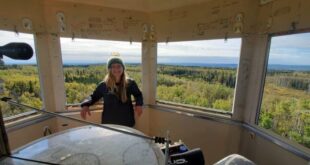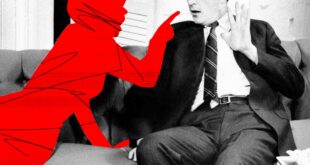New technique that identifies sex using tooth enamel is changing historical narratives

Iron Age remains found on the Isles of Scilly belonged to a female warrior, according to the authors of a new study that challenges long-held assumptions about the historical role of women in warfare.
Ever since the burial site was discovered in 1999 at a farm on the British island of Bryher, scientists have been at odds as to whether it belonged to a man or a woman. But thanks to a modern technique that involves analyzing the proteins found in tooth enamel, archeologists say they finally have an answer.
"We found that this 2,000-year-old burial — one of the richest burials in the southwest of Britain — was a female, or a woman," human skeletal biologist Sarah Stark told As It Happens guest host Aarti Pole.
"It really is opening the door to this hidden female warrior."
Stark works for Historic England, a public agency dedicated to the preservation of historical sites, which led the study into the Iron Age remains. The findings were published in the Journal of Archaeological Science: Reports.
The sword and the mirror
Iron Age graves with swords usually belong to men, while those with mirrors tend to belong to women, says Stark. But the Bryher burial site contains both.
"This is something that really sets the Bryher burial apart," Stark said. "This kind of tipped us off into knowing that this person — this woman — was of significance."
She and her colleagues suspect she was "someone that was organizing, commanding or leading in warfare at this time."
Stark says there's a lot we don't know about Iron Age Britain before the arrival of Romans — but one thing we know for sure is that violence and warfare was common.
"We see that men and women were engaging in kind of violent activities based on the trauma that we've seen in other bones in surrounding areas," she said. "So it's not out of the ordinary to think that both men and women should be able to defend themselves."

It's not just the sword that's connected to war, she says, but potentially the mirror too.
"To be able to signal to others through beams of light would be a huge advantage, both in either warning … others your in party of a potential attack, or co-ordinating an attack," she said.
Archeologist Bettina Arnold, who was not involved with the study, cautioned against assuming the presence of a sword means the person was a warrior.
Arnold, a University of Wisconsin Milwaukee professor who studies the Iron Age, says it's not uncommon to find weapons buried with women or various types of leaders. They symbolize that "you are protecting your community," she said.
"It's probably more likely a symbol of authority, and of a particular kind of leadership role," Arnold said. "That doesn't necessarily mean they were actually riding into battle."

Mirrors, she said, have also been associated with religious or spiritual roles, including fortune telling.
Arnold says she doesn't doubt the existence of female warriors in history, and that, in fact, men may have also been wrongly assumed to be soldiers because of the weapons found in their graves.
Tobe certain about any individual case, she says you would require multiple lines of evidence, such as markings on the remains that indicate an individual hadbeen in combat.
Tooth technique a real 'game changer'
The human remains found at Bryher, however, are badly fragmented and poorly preserved. That's why previous attempts to determine sex using DNA failed.
But this time, the researchers turned to the teeth.
"Tooth enamel is the hardest and most durable substance in the human body. It contains a protein with links to either the X or Y chromosome, which means it can be used to determine sex," co-author Glendon Parker, a toxicology at the University of California at Davis, said in a press release.
Analysis of the Bryher remains show a 96 per cent likelihood the bones belonged to a female.
"Given the degraded state of the bones, it's remarkable to get such a strong result. It makes you wonder what could be discovered by re-visiting other badly degraded burials," Parker said.

The same technique was recently used to reclassify 5,000-year-old remains from an ornate Spanish tomb from male to female.
Arnold called the tooth enamel technique "a total game changer" that's more cost-effective than DNA testing, and more accurate than interpreting objects found in graves.
Stark says it "opens a huge realm of possibilities where we might start, again, uncovering … more hidden female warriors."
"We might find it's actually quite common," she said. "We've just been kind of missing them."
Changing historical narratives about gender
This study comes as scientists are re-evaluating many long-held assumptions about gender roles throughout history.
In one recent study, published in June, researchers dispel what they call the "myth" that men were primarily hunters and women were gatherers in early human populations.
And in 2017, advanced DNA analysis was used to identify a Viking warrior's remains as female.
In the latter case, some archeologists argued those remains could have belonged to someone who, in today's parlance, would be considered transgender or non-binary.
"That's part of the problem, too, that we're projecting our own ideas — you know, the sort of binary system that we're still kind of tied to, unfortunately — projecting that into the past. And I think you miss a lot that way," Arnold said.
Stark agreed it's something worth considering.
"It's something we want to be quite mindful of when we sort of start to think … in terms of gender and identity, and taking kind of our modern constructs and applying them to the past," she said.

Add some “good” to your morning and evening.
A variety of newsletters you'll love, delivered straight to you.
*****
Credit belongs to : www.cbc.ca
 MaharlikaNews | Canada Leading Online Filipino Newspaper Portal The No. 1 most engaged information website for Filipino – Canadian in Canada. MaharlikaNews.com received almost a quarter a million visitors in 2020.
MaharlikaNews | Canada Leading Online Filipino Newspaper Portal The No. 1 most engaged information website for Filipino – Canadian in Canada. MaharlikaNews.com received almost a quarter a million visitors in 2020.







